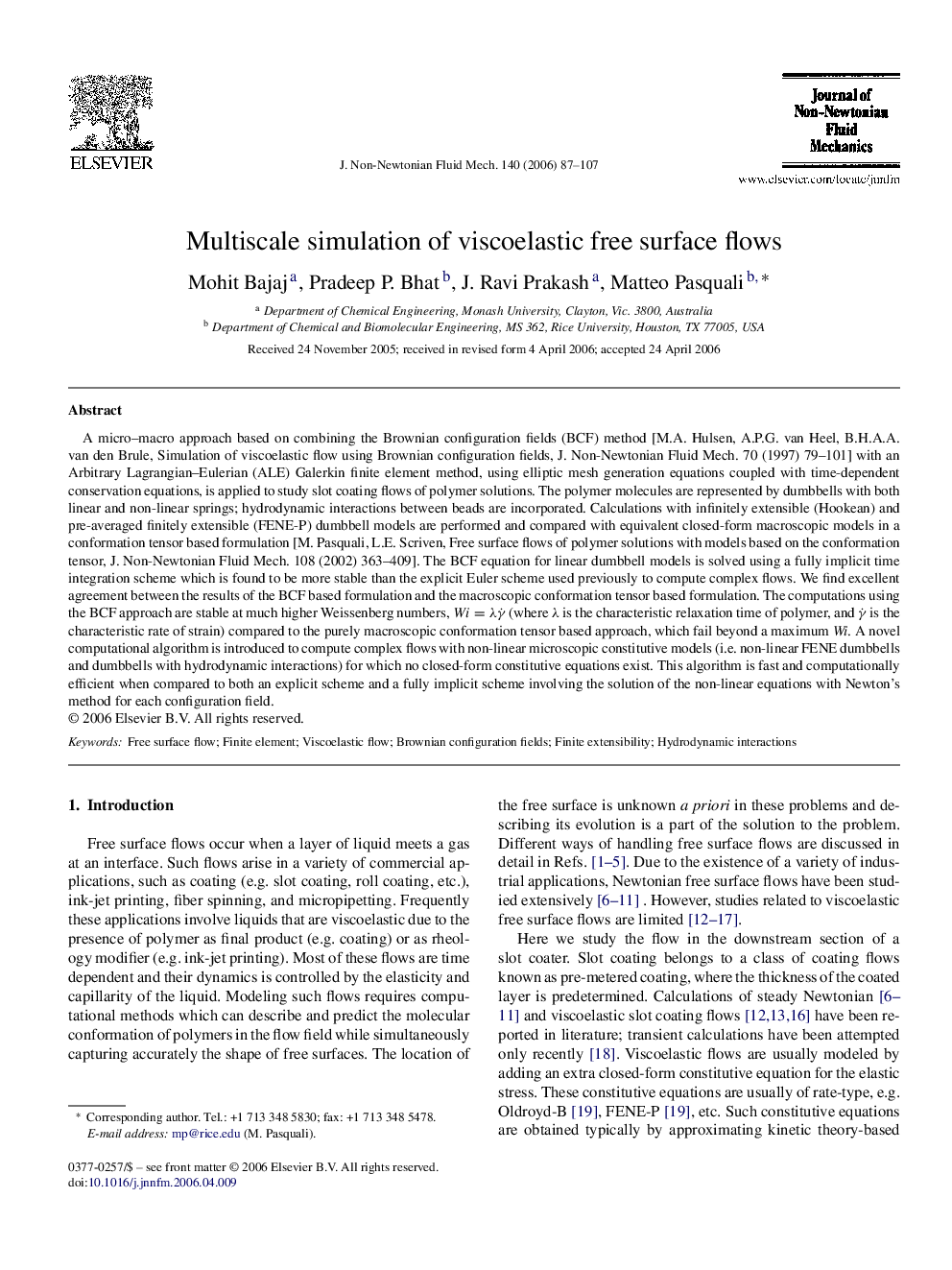| Article ID | Journal | Published Year | Pages | File Type |
|---|---|---|---|---|
| 671594 | Journal of Non-Newtonian Fluid Mechanics | 2006 | 21 Pages |
A micro–macro approach based on combining the Brownian configuration fields (BCF) method [M.A. Hulsen, A.P.G. van Heel, B.H.A.A. van den Brule, Simulation of viscoelastic flow using Brownian configuration fields, J. Non-Newtonian Fluid Mech. 70 (1997) 79–101] with an Arbitrary Lagrangian–Eulerian (ALE) Galerkin finite element method, using elliptic mesh generation equations coupled with time-dependent conservation equations, is applied to study slot coating flows of polymer solutions. The polymer molecules are represented by dumbbells with both linear and non-linear springs; hydrodynamic interactions between beads are incorporated. Calculations with infinitely extensible (Hookean) and pre-averaged finitely extensible (FENE-P) dumbbell models are performed and compared with equivalent closed-form macroscopic models in a conformation tensor based formulation [M. Pasquali, L.E. Scriven, Free surface flows of polymer solutions with models based on the conformation tensor, J. Non-Newtonian Fluid Mech. 108 (2002) 363–409]. The BCF equation for linear dumbbell models is solved using a fully implicit time integration scheme which is found to be more stable than the explicit Euler scheme used previously to compute complex flows. We find excellent agreement between the results of the BCF based formulation and the macroscopic conformation tensor based formulation. The computations using the BCF approach are stable at much higher Weissenberg numbers, Wi=λγ˙ (where λλ is the characteristic relaxation time of polymer, and γ˙ is the characteristic rate of strain) compared to the purely macroscopic conformation tensor based approach, which fail beyond a maximum Wi. A novel computational algorithm is introduced to compute complex flows with non-linear microscopic constitutive models (i.e. non-linear FENE dumbbells and dumbbells with hydrodynamic interactions) for which no closed-form constitutive equations exist. This algorithm is fast and computationally efficient when compared to both an explicit scheme and a fully implicit scheme involving the solution of the non-linear equations with Newton’s method for each configuration field.
